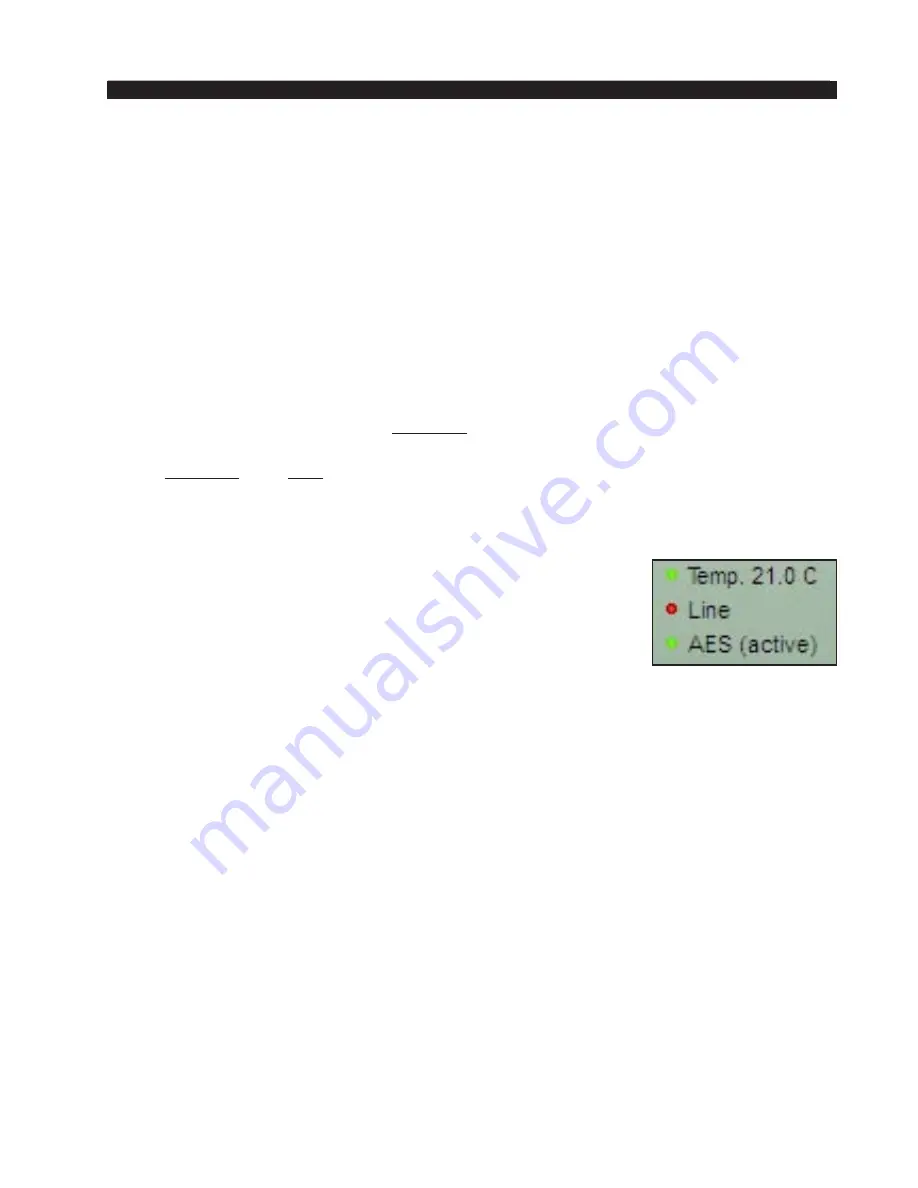
page 3 – 67
AM-10HD / Aug 2008
A M - 1 0 H D G U I
4. Once the GUI is open click on the Devices button on the right hand side of the
GUI.
5. In the Devices dialog that opens click the Add button.
6. The Edit Device window will open.
7. Enter a NEW name for your AM‑10HD but use the same hardware IP address
that your unit currently has.
8. Click OK to close the edit device dialog.
9. In the Devices dialog highlight your new device and click Select. The Devices
box will close.
10. Now click on the Online/Offline button left of the Status window at the top of
the GUI.
11. Once the GUI is online click on the SYSTEM tab. The System screen will open.
12. Click on GUI Access button (DO NOT CLICK ON GUI LOCK!!!). The GUI
Access Code & Permissions box will open.
13. Carefully click only the Clear Access Code button. Then click OK.
14. The GUI Access Code & Permissions box will close.
Indicators/Temperature Readout
Temp – The displayed value is the current operating tempera‑
ture in degrees Celsius of the AM‑10HD motherboard. Normal
temperatures should be in the range of 25ºC to 45ºC, and will vary
somewhat depending on ambient temperatures. When the “Temp”
indicator is green, the operating temperature inside the AM‑10HD
is satisfactory. When it is red, the temperature has reached 50ºC or
higher and is too high.
Note: The AM‑10HD contains one small fan to stir the air inside the
AM‑10HD chassis in order to maintain a more uniform temperature distribution.
Normal ventilation of the AM‑10HD chassis is by natural convection — cooler air
from outside the chassis is drawn in through the lower side slots in the chassis and
rising warmed air exits by way of the higher slots along the top of the rear panel.
This scheme is quite adequate for controlling temperatures inside the AM‑10HD
without resorting to forced air cooling.
Line – When green, this indicator shows that audio is present on the analog line
inputs and that it is above ‑48dBFS. When the indicator is red it means that audio is
missing or too low to be detected.
AES – When green, this indicator shows that valid data is present on the AES3
digital input, and that it is above ‑48dBFS. When the indicator is red it means that
valid digital audio data is not presently being detected, audio data could be present
but is corrupted in some way, or that audio is present but is too low.






























